|
Size: 751 km2 (1,3 x Isle of Man).
Capital: Roseau.
Number of inhabitants: 72.660.
Number of inhabitants per km2: 97.
Largest religious groups: Roman-Catholic (80%) and Protestant (15%).
Official language: English and a French dialect.
Largest population groups: Afro-Caribbean 87%, whites 1%, Carib-Indians, 3%, mixed 9%.
Neighbouring countries: Guadeloupe and Martinique
National holiday: Independence day on 3 November
|
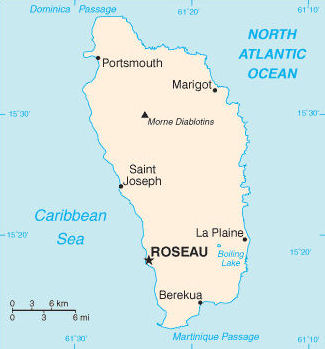 |
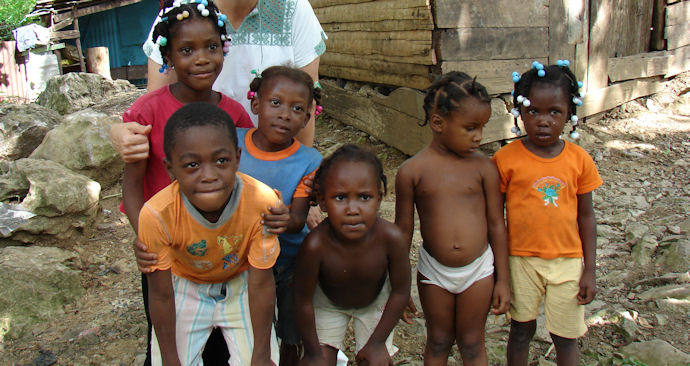
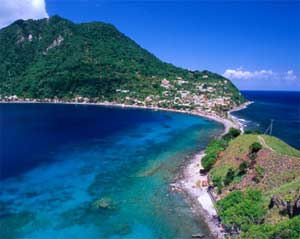 Climate: Dominica has a tropical climate. The dry season lasts from November until April. In this period the average temperature is around 25°C. In the other months the temperature often exceeds 30°C. Even at night it often remains around 20°C. The average temperature of the water is 24°C. During the months of May until October there are occasional showers. In the months of August, September and October it rains the most. In the months of March, May and June it rains the least. There is a lot of difference in the amount of rain per area. In the mountains it rains six times as much as along the coast. Climate: Dominica has a tropical climate. The dry season lasts from November until April. In this period the average temperature is around 25°C. In the other months the temperature often exceeds 30°C. Even at night it often remains around 20°C. The average temperature of the water is 24°C. During the months of May until October there are occasional showers. In the months of August, September and October it rains the most. In the months of March, May and June it rains the least. There is a lot of difference in the amount of rain per area. In the mountains it rains six times as much as along the coast.
In general you could say that the Western part of the island is dryer than the Eastern part. In autumn there is a slight chance of hurricanes.
Type of state: Parliamentary democracy with 30 members, of which 21 are elected. The other 9 members are appointed by the president or by the other members of the parliament. The head of the government of the island is the president, who is elected every five years by the parliament. Currently this is Nicholas Liverpool.
Dominica should not be confused with the Dominican Republic.
History:
Dominica was discovered on 3 November 1493 by Christopher Columbus, during his second journey to what he thought was India. The name is derived from the day the island was discovered; a Sunday, dies domenica in Latin. Dominica was the last Caribbean island that was colonized by Europeans, primarily because of the heavy resistance of the original inhabitants, the Caribs (Indians).
When Columbus discovered the island, Arowaks and Caribs were living there. Not before long a large part of them died of the flu and smallpox. They were contaminated by the Spaniards. Currently about 3.000 Caribs live on Dominica.

Carib-Indians
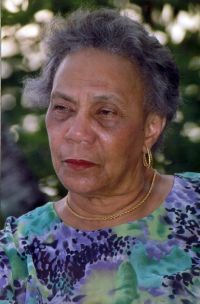 France claimed the island in 1635. The missionaries who then entered the country were opposed by the Caribben. For as long as a century the island became a bone of contention between France and England. France handed over its possession to the United Kingdom in 1763, which turned it into a colony in 1805. France claimed the island in 1635. The missionaries who then entered the country were opposed by the Caribben. For as long as a century the island became a bone of contention between France and England. France handed over its possession to the United Kingdom in 1763, which turned it into a colony in 1805.
The island became independent on 3 November 1978. In 1980, the corrupt government came to an end, and so did the unbalanced situation that the population was in, when Mary Eugenia Charles became prime-minister. She was the first female prime minister of the Caribbean and governed Dominica until 1995. Dominica is a member of the British Commonwealth.
Mary Eugenia Charles
Production and trade:
Dominica is a member of the following organisations that deal with production, agriculture and international trade:
- Caricom
- CARIFORUM
- Food and Agriculture Organisation (United Nations)
- International Monetary Fund
- UNCTAD
- World Trade Organisation WTO
Dominica particularly exports goods to the United Kingdom, the United States and other island states in the region. The main exported products are bananas (50%) and to a lesser extent, coffee, ornamental plants, oranges and soap.
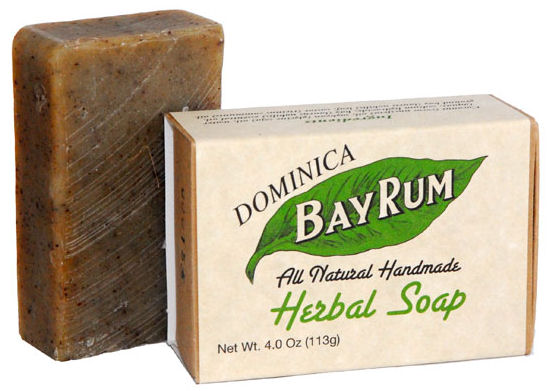
The country mainly imports goods from the United Kingdom, the United States, the Netherlands and Canada. The most important imported products are machines and tools, food and chemicals.
Economy:
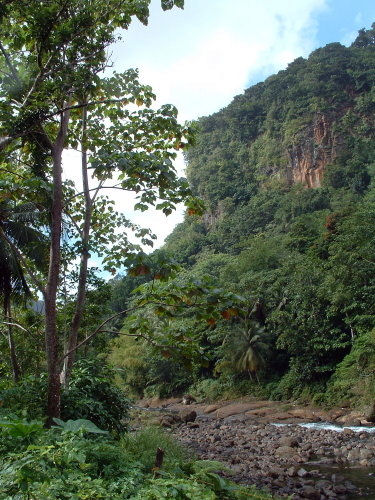 One third of the population works in agriculture, especially in the banana industry. Not many people earn a living through fishery. Ecotourism is increasing rapidly. The island´s nickname is ´Nature island of the Caribbean´ because of its wild natural beauty. However, nature is quite rough and there are but a few beaches. As a result the number of visitors on the islands is limited. One third of the population works in agriculture, especially in the banana industry. Not many people earn a living through fishery. Ecotourism is increasing rapidly. The island´s nickname is ´Nature island of the Caribbean´ because of its wild natural beauty. However, nature is quite rough and there are but a few beaches. As a result the number of visitors on the islands is limited.
|





 Climate: Dominica has a tropical climate. The dry season lasts from November until April. In this period the average temperature is around 25°C. In the other months the temperature often exceeds 30°C. Even at night it often remains around 20°C. The average temperature of the water is 24°C. During the months of May until October there are occasional showers. In the months of August, September and October it rains the most. In the months of March, May and June it rains the least. There is a lot of difference in the amount of rain per area. In the mountains it rains six times as much as along the coast.
Climate: Dominica has a tropical climate. The dry season lasts from November until April. In this period the average temperature is around 25°C. In the other months the temperature often exceeds 30°C. Even at night it often remains around 20°C. The average temperature of the water is 24°C. During the months of May until October there are occasional showers. In the months of August, September and October it rains the most. In the months of March, May and June it rains the least. There is a lot of difference in the amount of rain per area. In the mountains it rains six times as much as along the coast.
 France claimed the island in 1635. The missionaries who then entered the country were opposed by the Caribben. For as long as a century the island became a bone of contention between France and England. France handed over its possession to the United Kingdom in 1763, which turned it into a colony in 1805.
France claimed the island in 1635. The missionaries who then entered the country were opposed by the Caribben. For as long as a century the island became a bone of contention between France and England. France handed over its possession to the United Kingdom in 1763, which turned it into a colony in 1805. 
 One third of the population works in agriculture, especially in the banana industry. Not many people earn a living through fishery. Ecotourism is increasing rapidly. The island´s nickname is ´Nature island of the Caribbean´ because of its wild natural beauty. However, nature is quite rough and there are but a few beaches. As a result the number of visitors on the islands is limited.
One third of the population works in agriculture, especially in the banana industry. Not many people earn a living through fishery. Ecotourism is increasing rapidly. The island´s nickname is ´Nature island of the Caribbean´ because of its wild natural beauty. However, nature is quite rough and there are but a few beaches. As a result the number of visitors on the islands is limited.


